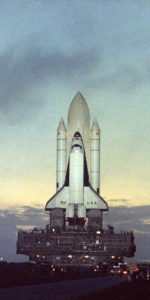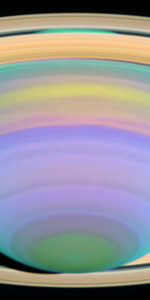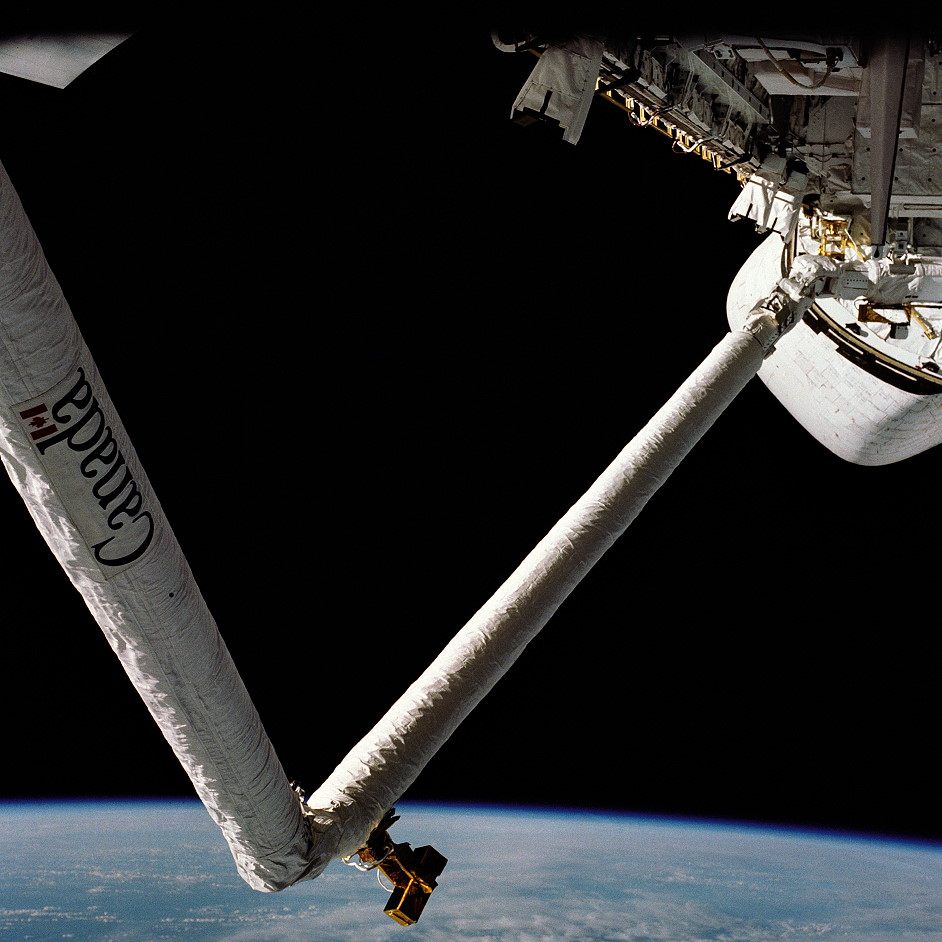
Thirty-five years ago, today, Space Shuttle Columbia was sailing—though not entirely smoothly—through her second orbital mission, STS-2. Aboard the orbiter, astronauts Joe Engle and Dick Truly were tasked with spending five days in space, operating a fully fledged scientific research payload, and evaluating Canada’s Remote Manipulator System (RMS) for the first time. As detailed in yesterday’s AmericaSpace history article, Columbia’s second flight had been a long time coming, having been delayed since the end of September, but after finally reaching orbit the shuttle’s promise of a reusable piloted spacecraft appeared to bear fruit. All that fell into disarray within hours of liftoff, when a mission-limiting problem with one of her electricity-generating fuel cells arose.
The situation deteriorated rapidly and within two hours a sharp voltage drop was recorded on the cell, indicating the probable failure of one or more “stacks” inside it. If that was the case, it meant that the cell’s capability to generate electricity for the orbiter and (as a byproduct) also drinking water for the astronauts, might be compromised. With the likelihood of a contaminated water supply, the No. 1 cell was switched off later that evening, and in response to worries that the water was being electrolyzed—thus forming a potentially explosive mixture—it was also depressurized. Under prescriptive mission rules, all three fuel cells had to be fully operational in order for a mission to continue. Disappointingly, Capcom Sally Ride told Engle and Truly that their mission was being shortened by 60 percent and they would come home the very next day, 14 November, after just 54 hours.
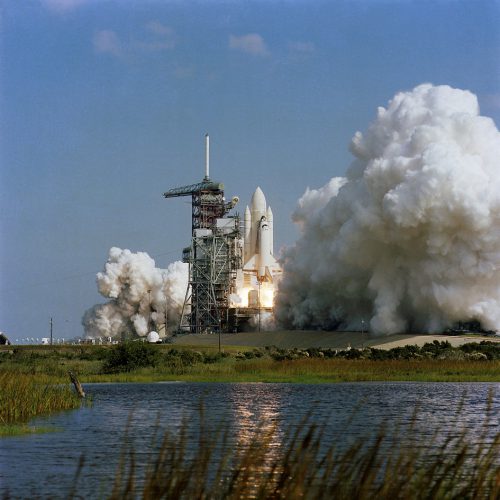
“That’s not so good,” was all a dejected Truly could say. He and Ride had spent a significant amount of time together, working on the RMS development tasks, and it seemed that their efforts were now in vain. The next-best option was to extract as much science from STS-2 as possible in the short time available. A large payload of instruments, provided by NASA’s Office of Space and Terrestrial Applications, dubbed “OSTA-1,” was already gathering atmospheric and environmental data and, indeed, even on the shortened mission Engle and Truly managed to tick-off almost 90 percent of their assigned tasks.
Years later, Engle would credit their training with having enabled them to get so much done in so little time. “We had trained enough to know precisely what had to be done,” he said, “and we prioritized things as much as we could. We only had the ground stations, so we didn’t have continuous voice communication with Mission Control and [they] didn’t have continuous data downlink from the vehicle either, only when we’d fly over the ground stations.” When the astronauts were supposed to go to sleep, they stayed awake all night, running the RMS tests and overseeing OSTA-1. “Then, the next morning, when the wake-up call came from the ground,” Engle continued, “we tried to pretend like we were sleepy and just waking up!”
Burning the midnight oil in this fashion did not go unnoticed. After landing, veteran flight director Don Puddy told Engle that he knew the crew was awake all night, because they were drawing more power than they should have been. …
The astronauts ran the RMS in all five of its control modes, testing its primary and backup control software and causing a cheer in Mission Control—particularly from the Canadian delegation—when they transmitted televised images of the robotic arm down to the ground. Engle fired Columbia’s thrusters to evaluate its characteristics under duress and the arm’s television camera was focused at one point on a grinning Truly. Floating at the flight deck windows, the shuttle pilot held up a sign, emblazoned with the legend: HI MOM.
Clearly, Canada was proud of its arm, but Engle’s playful humor had led him to have a large U.S. flag sewn onto the aft bulkhead of the payload bay. As a result, when the RMS was being unberthed and put through its pace, the television audience on the ground saw not the large maple leaf on the arm, but the huge Star-Spangled Banner. However, the Canadians had secreted a few “surprises” in the shuttle’s middeck for the crew. They had “modified” Engle and Truly’s clothes, replacing the astronauts’ shorts with Canadian jockey shorts of scarlet and white, with a large maple leaf at the center.
OSTA-1 proved hugely successful, observing Earth with a large synthetic aperture radar antenna, mapping rock and mineral deposits, classifying surface features—water, vegetation, bare land, snow, cloud, and ice—and examining the severity of worldwide carbon monoxide levels. Plankton and chlorophyll levels in the oceans were monitored, and instances of lightning were recorded during orbital daytime and nighttime passes.
Re-entry on 14 November 1981 was dramatic, with 29 maneuvers planned for Engle and Truly during the period from Mach 24 to subsonic speeds. In essence, Engle became the only shuttle commander to fly a manual re-entry. “The rationale behind the maneuvers was [that] we were very anxious to see how much margin the shuttle had in the way of stability and control authority,” he recalled, years later. “Also, in the event that a deorbit had to be made on an orbit that had excessive cross-range to the landing site, in order to get more cross-range rather than S-band back and forth to deplete energy, the technique was to just leave the vehicle in the bank in one direction and keep flying to the landing site, off your straight ground-track toward your landing site. You could increase that cross-range ability by actually decreasing the angle of attack. It allowed the leading edge of the wing to heat up a bit more and would cut down on the total number of missions that a shuttle could fly, but it would allow you to get that extra performance to make it to the landing site.
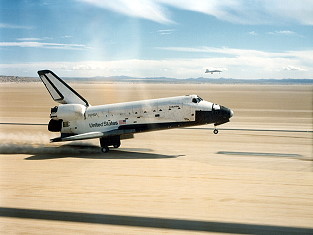
“How much the leading edge would heat up and just how much more lift-to-drag that would give you—turning ability, cross-range ability—was theoretically known and had some wind-tunnel test data, but the wind tunnels are very susceptible to a lot of variables, so you really want to know for sure what you have in the way of capabilities if you ever have to use them, and that’s what our purpose was,” said Engle. “During the entry, I would pulse the vehicle in all three axes to see what the effectiveness of the surfaces were during entry and how quickly the vehicle would damp out after being disturbed. Getting that data to verify and confirm the capabilities of the vehicle was something that we wanted very much to do and, quite honestly, not everyone at NASA thought it was all that important.”
All told, the Reaction Control System (RCS) thrusters were fired over a thousand times during Columbia’s re-entry, consuming more than 1,760 pounds (800 kg) of propellant. This was somewhat higher than planned, because the predicted fuel-consumption rate after two days in space differed from pre-launch estimates, which were based on a five-day flight. Shortly before Entry Interface, a large quantity of RCS propellant was “dumped” to more precisely control the shuttle’s center-of-mass and Truly executed a series of flight test objectives. One of these was a Push-Over/Pull-Up (POPU), in which he pushed the nose “down” from a 40-degree angle-of-attack to 35 degrees, then to 45 degrees, and finally back to 40 degrees. This helped to provide real-world data on Columbia’s aerodynamic performance during re-entry and, it was hoped, could serve as a tool to lower re-entry heating conditions on the Wing Leading Edges (WLEs).
Approaching Edwards Air Force Base, Calif., Engle felt that he was coming home, having served as a test pilot there, earlier in his career. During training, the base’s control tower operator jokingly told Engle to give him a call on Columbia’s final approach “and I’ll clear you to land.” Of course, the astronauts were communicating with Mission Control in Houston, Texas, but he felt that it would be fun to make the call.
“Eddy Tower,” he radioed, “it’s Columbia, rolling out on high final. I’ll call the gear on the flare!”
The tower controller loved it. “Roger, Columbia, you’re cleared No. 1. Call your gear” For them, it was gracious acknowledgement by Engle of the critical role provided by Edwards in support of the shuttle program.
This is part of a series of history articles, which will appear each weekend, barring any major news stories. Next week’s article will focus on the 20th anniversary of STS-80, which retains the record for the longest space shuttle mission of all time.
Want to keep up-to-date with all things space? Be sure to “Like” AmericaSpace on Facebook and follow us on Twitter: @AmericaSpace




